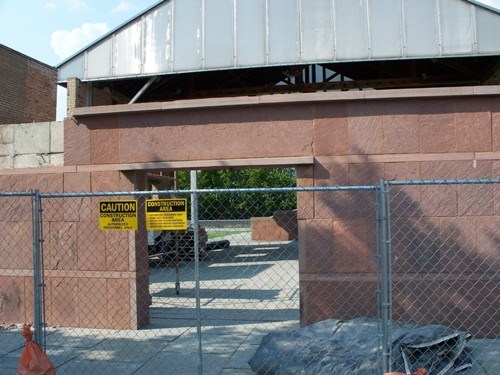
NPS Preservation treatment work began in August 2009 on the historic Wesleyan Chapel on Fall Street in Seneca Falls. 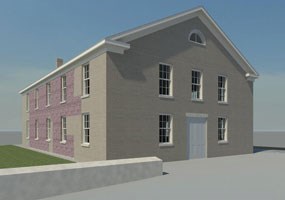
NPS The 1848 Seneca Falls Woman’s Rights Convention assembled in the Wesleyan Chapel at 11:00 am on July 19, held sessions that afternoon, then again on July 20, when sessions were held in the morning, afternoon, and evening. The Declaration of Sentiments was ratified by one hundred signers. With this two day meeting the women’s rights movement was launched in a building that was constructed by citizens dedicated to reform, to open public debate, and to the expansion of women’s traditional roles. 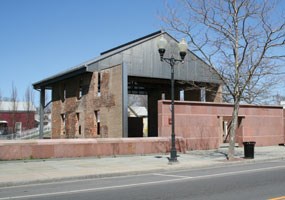
NPS 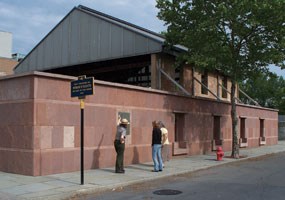
NPS This request resulted in the public trial and excommunication of Bement from the congregation for her not following church protocol by having her husband speak for her. Later that year, Bement and her supporters searched for a new church community, converted to Methodism, and worshiped together in the Wesleyan Chapel. The Wesleyan Methodists welcomed requests from the public to use their Chapel as a meeting space, no questions asked, no strings attached. 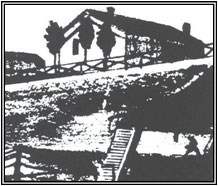
Seneca Falls Historical Society By 1871 the Methodist congregation who built the Wesleyan Chapel experienced a schism on many aspects of their religious experiences. The congregation split in two, one stayed Methodist, and the other became Congregationalists. The building was sold, and two new church buildings and communities were constructed and relocated nearby. 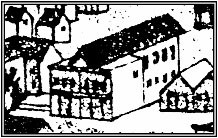
Seneca Falls Historical Society The first owner of the former Wesleyan Chapel operated the property as an opera house, and soon it was updated to a movie theater. Later it was used as a grocery store, furniture store, New York State Telephone office building, roller-skating rink, Ford Dealership and Garage, a Laundromat, and an apartment building. 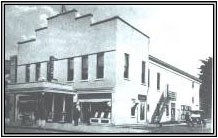
Seneca Falls Historical Society Nearly all the different property owners made substantial improvements. Electricity, plumbing, and heating were added. The building’s roof was expanded. The front and back walls were removed to make way for additions which offered businesses the opportunity to utilize the entire lot. 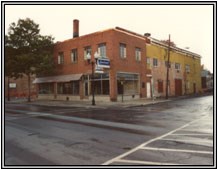
NPS In 1985 the National Park Service purchased the property to include in Women’s Rights National Historical Park. Now considered a national treasure, the Wesleyan Chapel would be preserved and protected to inspire future generations. The stories connecting the organizers, the convention, and the building that witnessed the discussions will be preserved of forever. 
A National Park Service management plan published in 1985, called for a nationwide design competition to turn what remained of the Wesleyan Chapel into a centerpiece of the park. The design would have to preserve the fragile and much altered historic structure, but also convey the significance of the Chapel in the struggle for women’s rights in America. To meet this challenge the National Park Service and the National Endowment for the Arts, working together, strove to meet three objectives: 
NPS 1. To share the creation and selection of the design for the preservation of the Wesleyan Chapel with all American citizens, with the spirit of the 1848 Women’s Rights Convention in mind 2. To promote awareness of Women’s Rights National Historical Park 3. To find an inspiring design for the preservation of the Wesleyan Chapel 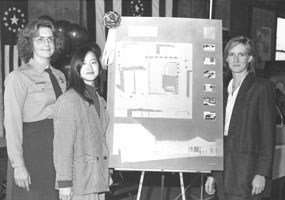
NPS 
NPS 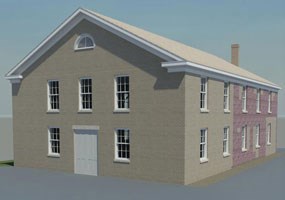
NPS The current rehabilitation plans call for enclosing the structure to halt deterioration caused by weather and vandalism. The original rock foundation from 1843 will be uncovered and new masonry walls will be constructed at the front and back ends of the structure to complete the four walls. As in the winning design chosen in 1987, the historic brick will be visibly different in color and easily recognizable in comparison to the new bricks added in this plan. New energy efficient windows, roof shingles, and interior heating and cooling systems will be installed to ensure a narrower range of temperature fluctuation. Having the historic fabric at this optimum temperature will decrease any further damage to the original wood, horsehair plaster, and brick elements from the 1843 Wesleyan Chapel. 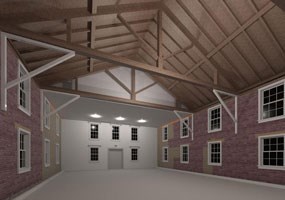
NPS Future plans call for the interior space to be enhanced with exhibits and a seating area, but details and funding requests are currently being explored. The Wesleyan Chapel will once again be a centerpiece of Women’s Rights National Historical Park. |
Last updated: December 2, 2018
